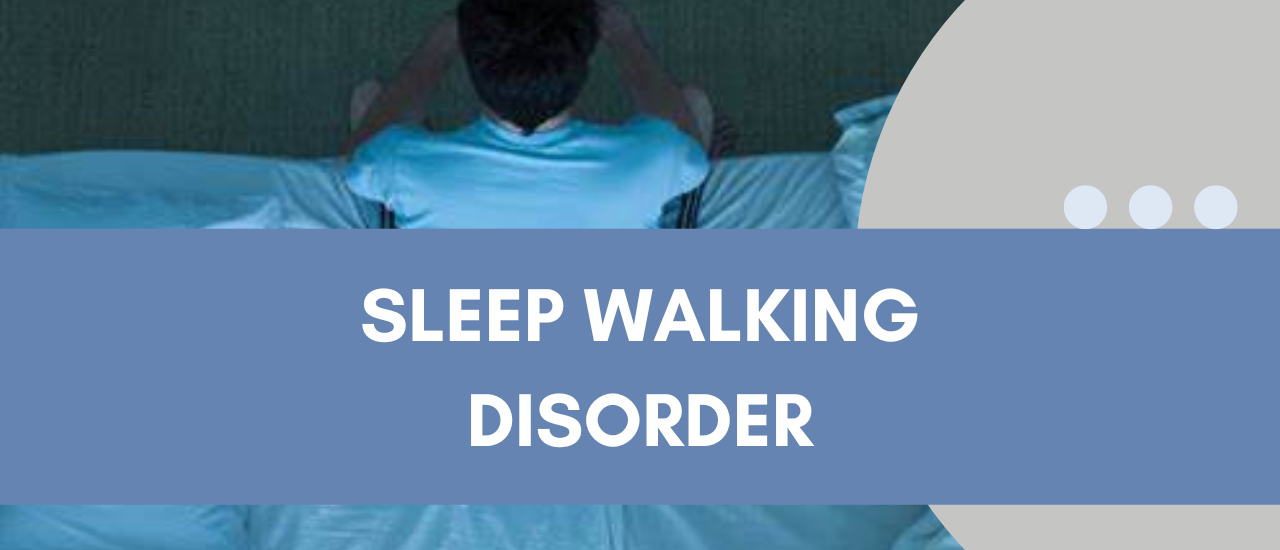

wordpress-seo domain was triggered too early. This is usually an indicator for some code in the plugin or theme running too early. Translations should be loaded at the init action or later. Please see Debugging in WordPress for more information. (This message was added in version 6.7.0.) in /home/sehatnagar.com/public_html/wp-includes/functions.php on line 6114
A youngster who engages in sleepwalking disorder, also known as somnambulism, wakes up in the middle of the night and walks or engages in other activities. The main sleepwalking disorder cause is uncertain, it appears to run in families. If other members of your immediate family have or have had sleepwalking behaviors or night terrors, you are more likely to have these as well. In most cases, the youngster has no memory of getting up or participating in the activities. In the initial half of the night, typically within an hour or two of falling asleep, sleepwalking disorder tends to happen. The likelihood of other sleep disorders and other illnesses being mistaken for or coexisting with sleepwalking is higher in adulthood.
Sleepwalking in and of itself is fairly common, especially in youngsters, but sleepwalking experiences in adults are also not uncommon. About 20% of children between the ages of 4 and 8 will initially encounter bouts of sleepwalking. Sleepwalking is more common in boys than in girls among school-aged youngsters. Bedwetting and childhood sleepwalking are frequently associated. Compared to children, adults are less likely to experience sleepwalking, but about 2.5% of adults do.
One to two hours after falling asleep is the typical time that sleepwalking happens. It’s unlikely to happen while you’re napping. An episode of sleepwalking can happen infrequently or frequently, and it typically lasts a few minutes but can last longer.
The development of the central nervous system has not caught up with the rest of the body and results in abnormal sleep behaviors. When the central nervous system matures, then the patient will typically outgrow the sleepwalking disorder. Sleep walking can be brought on by:
An individual’s likelihood of acquiring a sleep problem, especially insomnia, is significantly influenced by their mental health. Numerous mental health problems have been linked to sleep deprivation and low quality sleep. These consist of impatience, mood swings, depression, anxiety, and problems with impulse control. Depression may result from the stigma attached to sleep disorders like narcolepsy.
Consider these safety measures if sleepwalking has caused or could cause injuries: Before going to bed, lock all outside doors and windows. Interior doors may even be locked, or they could have bells or alarms installed. Place a gate to block stairways or doorways, and move electrical cords and other trip risks to a safer location. Sleep on the ground floor.
You don’t have to wake the person up. Even though being woken is not harmful to the person, it can be upsetting if the person starts to feel confused, bewildered, and even agitated.
Before going to bed, engage in peaceful activities like reading a book, doing a puzzle, or taking a warm bath. Also helpful may be relaxing techniques like meditation. Make the bedroom peaceful and comfy so you can sleep.
Identify the issues that cause stress and ways to handle the stress. Talk about what’s bothering you. Or if your child sleepwalks and seems anxious or stressed, talk with him or her about any concerns. A mental health professional can help.
Sleepwalking can be exacerbated by exhaustion. Try an earlier bedtime, a more consistent sleep routine, or a quick nap, especially if you have young children, if you are sleep deprived. Avoid if at all possible any noises or other stimuli that might wake you up.
Sleep Talking Disorder: Symptom, Adverse Effects, Risk Factors
Sleep Wake Disorder, And Its Symptoms